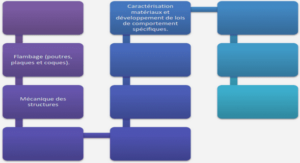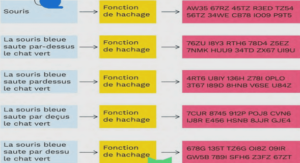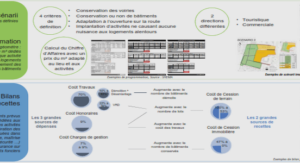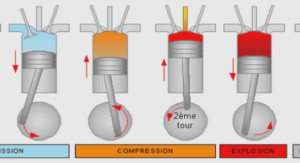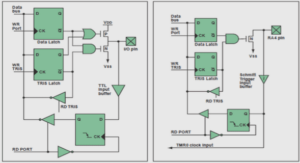Expression of PE and sortilin during the 3T3-L1 differentiation into adipocytes
We first investigated the expression of sortilin and PE in non-differentiated 3T3-L1 cells and during their differentiation into adipocytes. During the adipogenesis, the increase of the sortilin mRNA level appeared biphasic, with a first peak at the 4th day (by 24-fold compared to day 0; p=0.0352), followed by a decrease at day 6 and then a significantly increase during differentiation up to day 14 (by 28-fold compared to day 0; p=0.00253) (Figure 1A). At the protein level, the expression of sortilin was correlated with the level of produced soluble PE (Figure 1B). The expression of sortilin strongly increased between day 0 and day 4 (by 86-fold) to reach a plateau value, maintained all along the differentiation process (Figure 1B, black line). Similarly, the level of PE strongly increased by 3.8-fold between day 0 and day 4 (p<0.001 at day 4), and then recovered a lower plateau value up to day 14 of differentiation (a 2-fold increase compared to day 0) (Figure 1B, red line).
Figure 1C shows that sortilin and PE are co-localized with VAMP2, a marker of Glut4-containing vesicles [15], in permeabilized 3T3-L1 adipocytes. Specifically, these molecules were all co-localized in the Golgi apparatus (Figure 1C, white arrows). The sortilin immunoreactivity was also present at the plasma membrane (Figure 1C, blue arrows), unlike the PE staining.
Effect of TNFα and dexamethasone on PE and sortilin expression in 3T3-L1 adipocytes
To investigate the correlation between sortilin expression and the production of PE, we tested the effects of TNFα treatment, a pro-inflammatory cytokine, previously described to down-regulate sortilin mRNA and protein expression in 3T3-L1 adipocytes [10], and dexamethasone treatment, which inhibits the insulin-stimulated Glut4 translocation to the plasma membrane and the glucose transport [16].
The expression of sortilin was inhibited by 30% and 38% after 48 and 72h of TNFα treatment, respectively (p=0.035 and p=0.0096, respectively) (Figure 2A). These results confirmed that TNFα treatment induced a strong down-regulation of sortilin expression at both mRNA (data not shown) and protein levels [10]. Interestingly, TNFα treatment also decreased the PE production from 0.321 ± 0.051 to 0.135 ± 0.053μM after 72h incubation (p=0.018) (Figure 2B). In these conditions, TNFα treatment strongly decreased the insulin-induced glucose uptake by approximately a factor 2 after 48h and 72h incubation (p=0.02 at 48h) (Figure 2C). These results indicate that the TNFα-induced decrease of sortilin expression is correlated with the decrease of produced PE.
By contrast, dexamethasone treatment did not modify neither the sortilin expression (Figure 2D), nor the production of PE (Figure 2E), although we controlled that it inhibited the insulin-induced glucose uptake (Figure 2E). These results show that dexamethasone-induced insulin resistance is not sufficient to modify the sortilin expression and the PE production.
Effect of insulin on the release of PE
Sortilin is expressed in adipocytes and is strongly involved in the insulin-induced translocation of Glut4 to the plasma membrane [5]. 3T3-L1 adipocytes were stimulated with increased concentrations of insulin for various times but such treatments did not modify the release of PE (Figure 3A).
Effect of spadin on glucose uptake and intracellular signalling pathways in 3T3-L1 adipocytes
Spadin did not induce glucose uptake in 3T3-L1 adipocytes (Figure 3B, red full scares). Furthermore, insulin-induced glucose uptake was not modified by spadin (Figure 3B, full red circles). Similar results were obtained at the steady state glucose uptake: unlike insulin, spadin did not induce glucose storage (Figure 3C).
Finally, spadin (Figure 4, grey bars) did not active Akt (Figure 4A), Erk1/2 (Figure 4B) and Ampk (Figure 4C), three insulin-activated kinases involved in the Glut4 translocation to the plasma membrane (Figure 4, black bars). Taken together, these results indicate that spadin has no effect on 3T3-L1 adipocytes.
DISCUSSION
In this work, we show that sortilin expression and PE production are simultaneously increased during adipogenesis (Figure 1A-B). These results are in agreement with the role of sortilin in the formation and the insulin sensitivity of Glut4-containing vesicles [3; 8]. Moreover, in mature adipocytes, we observed that sortilin and PE are co-localized with VAMP2, a specific marker of Glut4-containing vesicles, in the Golgi apparatus (Figure 1C).
We investigated the effect of TNFα treatment on the PE level and confirmed the decrease of sortilin upon TNFα stimulation, as well as the reduction of the production of PE (Figure 2A-B). Despite the fact that PE is measurable in mouse and human serum [6], the mechanisms of release in the blood circulation remain unknown. According to our results, the decrease of PE level in 3T3-L1 adipocytes is only associated with TNFα-induced inflammation and insulin resistance but not with dexamethasone-induced insulin resistance. This suggests that circulating PE level might be a predictor of insulin resistance only in association with inflammation.
In physiological conditions, insulin induces the transduction of Akt signalling, leading to the translocation of Glut4 to the plasma membrane and to the glucose storage into adipocytes [17]. Under these conditions, the translocation should be associated with the release of PE outside the cells [18]. Unfortunately, we show that insulin do not activate the release of PE (Figure 3A), suggesting that the regulation of the circulating PE, if existing, do not result from the insulin-induced translocation of sortilin to the plasma membrane. Spadin is a new class of highly effective and fast acting antidepressant, by inhibiting a potassium channel, TREK-1 [6; 19]. Obesity can increase the risk of depression, and depression is predictive of developing obesity [20]. Interestingly, personal results suggest that PE concentration in the blood may be associated to mood disorders, such as depression, and that spadin may modulate insulin secretion. So, we hypothesized that PE level might be a missing link between metabolism and mood.
The functional activity of spadin in the brain [21] prompt us to investigate its activity in peripheral targets where sortilin is expressed. We showed that spadin has no effect neither on basal glucose uptake, nor on insulin-induced glucose uptake (Figure 3). Moreover, spadin is unable to activate insulin-activated signalling pathways involved in glucose uptake, such as Akt, Erk or Ampk (Figure 4). Taken together, these results indicate that spadin does not play any role in adipocytes expressing sortilin, probably due to the absence of TREK-1 channels in these cells.
In conclusion, this work demonstrates that, in vitro, the production of PE is correlated with the expression of sortilin during adipogenesis and TNFα-induced inflammation. It also shows that spadin, a potent antidepressant in preclinical development phase, has no side effects on glucose storage in adipocytes.


